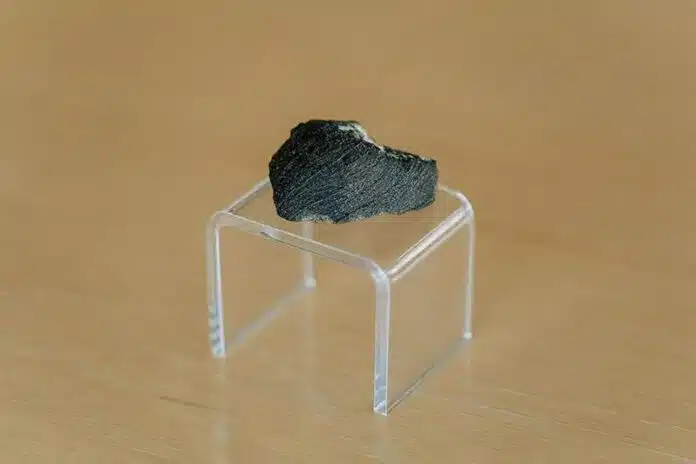
By Pranjal Malewar 14 Nov, 2024
Collected at: https://www.techexplorist.com/meteorite-reveals-mars-liquid-water-742-million-years-ago/92609/
Amazonian-age Martian meteorites contain evidence of indigenous aqueous alteration, suggesting that liquid water was once present on Mars. However, determining the exact timing of this alteration and when water was available in the planet’s crust has been difficult for scientists to establish.
An international team of scientists, including two from Purdue University‘s College of Science, has recently determined the age of minerals in the Lafayette Meteorite that formed in liquid water.
The lead author, Marissa Tremblay, assistant professor in Purdue’s Department of Earth, Atmospheric, and Planetary Sciences (EAPS), specializes in using noble gases like helium, neon, and argon to study the physical and chemical processes shaping planetary surfaces. Tremblay explains that some Martian meteorites contain minerals formed through interactions with liquid water while still on Mars.
Tremblay said, “Dating these minerals can, therefore, tell us when there was liquid water at or near the surface of Mars in the planet’s geologic past. We dated these minerals in the Martian meteorite Lafayette and found they formed 742 million years ago.”
“We do not think there was abundant liquid water on the surface of Mars at this time. Instead, we think the water came from the melting of nearby subsurface ice called permafrost and that the permafrost melting was caused by magmatic activity that still occurs periodically on Mars to the present day.”
In this study, Tremblay and her team demonstrated that the age of water-rock interaction in the Lafayette Meteorite is reliable, unaffected by subsequent events such as the impact that ejected the meteorite from Mars, the heating it endured during its 11 million years in space, or its entry into Earth’s atmosphere. Despite these potential factors, the age of aqueous alteration in the meteorite remained consistent.
Ryan Ickert, senior research scientist at Purdue EAPS and co-author, highlighted that previous isotope data used to estimate the timing of water-rock interaction on Mars had needed to be more reliable, likely influenced by other processes. The team’s work provides a more precise and accurate date for when water was present on Mars, offering crucial insight into the planet’s history.
Lafayette Meteorite is believed to have been ejected from Mars’ surface about 11 million years ago by an impact event. After ejection, cosmic ray particles bombarded the meteorite in outer space, causing certain isotopes to be produced in Lafayette.
Once the Lafayette Meteorite hit Earth, the story becomes unclear. While it is certain that the meteorite was discovered in a drawer at Purdue University in 1931, the exact circumstances of how it ended up there remain a mystery.
The team used organic contaminants found on the Lafayette Meteorite, which were particularly prevalent in certain years, to help narrow down when it might have fallen. This analysis also raised the possibility that the meteorite’s fall could have been witnessed by someone, offering a potential clue to its history on Earth.
Journal Reference:
- M.M. Tremblay, D.F. Mark, D.N. Barfod, B.E. Cohen, R.B. Ickert, M.R. Lee, T. Tomkinson, C.L. Smith. Dating recent aqueous activity on Mars. Geochemical Perspectives Letters, 2024; 32: 58 DOI: 10.7185/geochemlet.2443

Leave a Reply